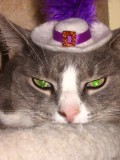Do Cats Always Land On Their Feet
Is it True Cats Can Fall and Not Get Hurt?
Up a tree, on a ledge, trotting across a roof top all places where a cat is in jeopardy of falling. When we witness such adventures we hardly gasp at all, because we are certain that should a cat take a fall, it is sure to land on all fours. Or is it? The answer depends directly on how high up the cat is, and just as important, the surface in which it lands. Cats may have nine lives to count upon during their stay with us here on earth, but you can be certain that a cat won't take a single life for granted!
The Cat: Beautiful in sight, as well as Design
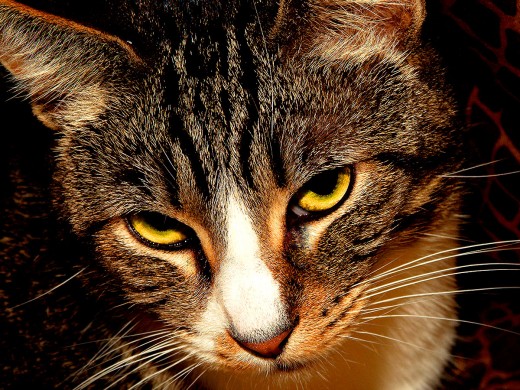
Cat Poll (as apposed to Pole Cat)
Have you ever witnessed a cat falling?
Who Knew a Cat Could Be so Scientific?
Freaked Fuzzy Falling Feline Physics
The miracle of cats landing feet first is actually a perfect design, one only mother nature can provide (and possibly a group of aerospace physics engineers). The science of the muscle and skeletal construction topped off by four legged capabilities, superman like vision, and balance generally only found in the best ballerinas, all join together creating the Cirque du Soleil skill-set allowing for a quick feet-first turn and then practically flying gracefully downwards prepared to land on all four feline feet.
What happens in the few short seconds when a cat starts to fall?
It is almost too fast to witness as nerve responses trigger a cats lightening-fast reflexes into action.The delicate balance of the features described above which have been given to a cat at birth, give the feline the agility to:
- First turn its head to locate its position to the earth
- Then the spine and back-end spin into place
- Next, the tail spins attempting to gain control of the body's horizonal position
- Then total control occurs, perfectly landing in position, right side up and on all four fuzzy feet
These amazing cat movements all take place within just a few very short seconds.
Short Cat Tails Don't Offer Much Maneuvering Stability in Gliding or on Foot
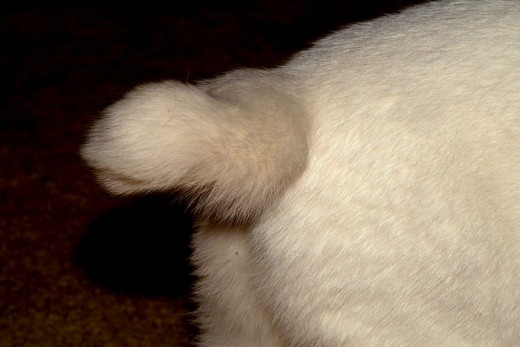
More is Best When it Comes to a Flying Cat
Cats Know Being Higher is Better
If a cat has the good fortune to land somewhere soft like a mound of soft dirt—when falling off of a high perch, for example—this cat would have a pretty good chance at landing without much to worry about in terms of real physical damage, from as high as around 50 feet. Cats have made it out unscathed from even greater distances and here's why; because the extra falling time causes the cats flying effect to come into play.
Here's how it all works out:
- A cat falls
- The cat relaxes
- It splays out its body like skydiver
- Its loose skin captures the air
- The cat slows down its descent due to increased body width and air
- Simulated flying takes place slowly bringing the cat to a reduced impact landing
Strangely enough, a shorter fall can cause a lot more damage to the cat, this is because a shorter fall doesn't leave time or room for the cat to get all of its techniques lined up—turning, relaxing, skydiving pose, simulated flight—for the desired damage free landing.
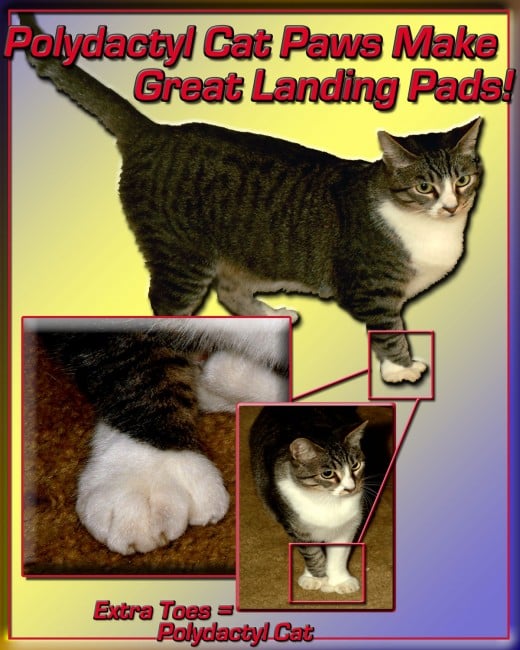
A Cat Has Impact Absorbing Powers
Cat Feet and Leg Construction; Mother Nature at Her Best
A very cool thing comes into play when a cat jumps, landing to earth from any given level, and that is the impact-absorbing structural configuration of its feet and legs. Its paw pads, which consist of really strong and tough outer skin, are connected to a small compact area of rigid but firm rubber-band like tissue. The combination of the two holds, connects, and keeps the toe bones stationary. Even more complex are the joints that connect the feet to the leg. This is where the ankle bones are built in such a manner that lateral movement can not occur, leaving the ankles to be secured and strongly bound by ligaments for added support. Mother nature has one heck of an understanding for constructing durable and functional sections of the feline body. This area of construction means that a cat can land safely, with all four legs able to absorb the full impact of even a 50 foot mishap!
This Sleeping White House-Cat Has Few Worries
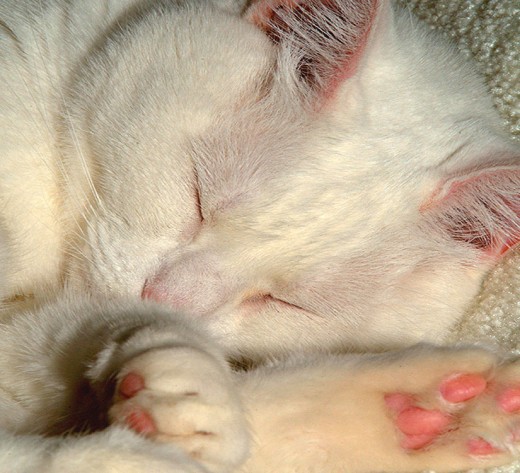
Those Amazing Flying Cats
Next time you witness a cat prepping and then engaging in an impromptu descent from the tree tops, you will understand just how that crazy feline manages to land on those strong yet springy feet and legs. It is all about physics, and no creature better understands its ability in this regard than does our agile friend the cat! Nine lives would seem more than enough for any one cat with such flying super powers, but those neighborhood cats prove time and time again the need for all nine of those lives. After all, with their ability to fly comes a great deal of curiosity; and we are all familiar with the unfortunate outcome of an overly curious cat!

Human Years Compared to Cat Years
Human Years
| Equivalent Cat Years
|
|---|---|
16
| 1
|
25
| 2
|
29
| 3
|
33
| 4
|
37
| 5
|
39
| 6
|
43
| 7
|
49
| 8
|
53
| 9
|
57
| 10
|
61
| 11
|
65
| 12
|
69
| 13
|
73
| 14
|
77
| 15
|
81
| 16
|
85
| 17
|
89
| 18
|
93
| 19
|
100
| 20
|
Calculations derived from ASPCA specs
Looking for More Pet Information?
- Dealing with a Jealous Pet (Especially How to Deal with Dog Jealousy)
Call it what you will – but pet jealousy happens and it’s something that you may need to deal with sooner or later if you’re going to have pets in your home. - Cat Behavior-Interesting Facts About Your Cat
If you are a devoted cat lover like me, and are curious about the little marvels your cat does, then you will want to read this. I know I enjoy the fascinating behavior of my cats, I often wonder what it means when one will purr so loudly, or if
How Much Do You Know About Cats?
view quiz statistics


